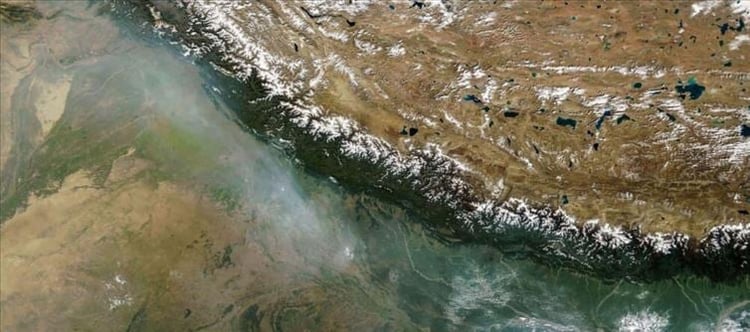
Due to the modest intensity, there were no reports of any injuries or property damage; but, the monday tremors have reignited interest in the 'Great Himalayan Earthquake'. For a while now, seismologists have been warning of a big tectonic earthquake in the environmentally vulnerable area. Scientists have predicted that the Himalayan belt would see an earthquake of magnitude 8 or higher at some point, affecting the Gangetic plain, ever since the 2015 nepal earthquake. According to renowned geophysicist Roger Bilham, the question is not what but when.
Major earthquakes have been occurring in the himalayas "every few hundred years," according to Bilham, who made this claim in an interview with the Times of India. The Himalayan area has seen several earthquakes at regular intervals during the last 2,000 years. The majority of these earthquakes have had magnitudes of 8.7.
However, the expert stated that no earthquakes of a Richter Scale strength greater than 8 had been recorded in the himalayas in the previous 70 years. For the record, the magnitude of the terrible Nepalese earthquake was 7.8. Nine thousand people were murdered in the Kathmandu earthquake, which also completely destroyed areas of the capital city of Nepal.
When Is The Big One Coming?
When the indian and Eurasian plates contact, earthquakes occur in the Himalayan area. Fault lines with significant geological strain are the result of these tectonic collisions. According to experts, the strain can only be released by a powerful earthquake. According to Bilham's study report, there is a concerning lack of a significant earthquake that may alleviate the load on the Himalayan Arc.
According to 2018 research by indian experts, the area between dehradun and western nepal might be struck by the next major Himalayan earthquake. Several significant earthquakes that recently struck india and its neighboring countries were examined by researchers at the jawaharlal nehru Centre for Advanced Scientific Research in Bengaluru. According to the researcher's examination of the earthquakes in gujarat and nepal, the area has a considerable tectonic build-up.
Is delhi Ready For a Major Earthquake?
Delhi is located in the IV zone of India's seismic map, according to a 2019 study released by the National Disaster Management Authority. The Delhi-Hardwar Ridge is the cause of Delhi's seismic vulnerability. The expansion of the Aravali Mountain range beneath the ganga basin corresponds with this geological structure. Major indian cities, ranging from delhi to Shimla, are particularly vulnerable.
Why future Himalayan Earthquake is so dangerous?
Because it will strike the mainland, seismologists predict that the next major earthquake in the Himalayan area will be very damaging. More than 300 million people's lives will be directly impacted. The Himalayan earthquake is extremely deadly because of its land-based location. In the case of a mega-quake, urban infrastructure is more susceptible to intense shaking.




 click and follow Indiaherald WhatsApp channel
click and follow Indiaherald WhatsApp channel